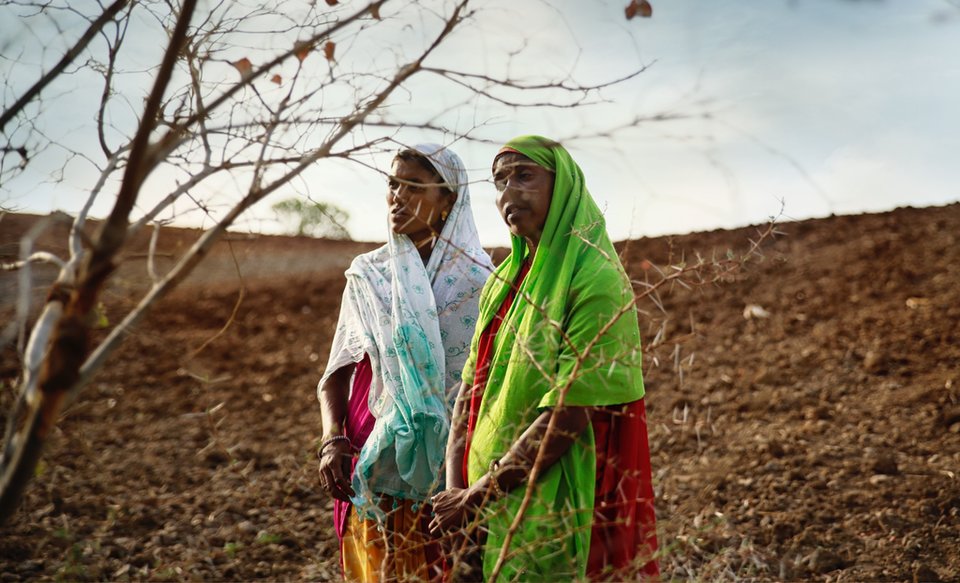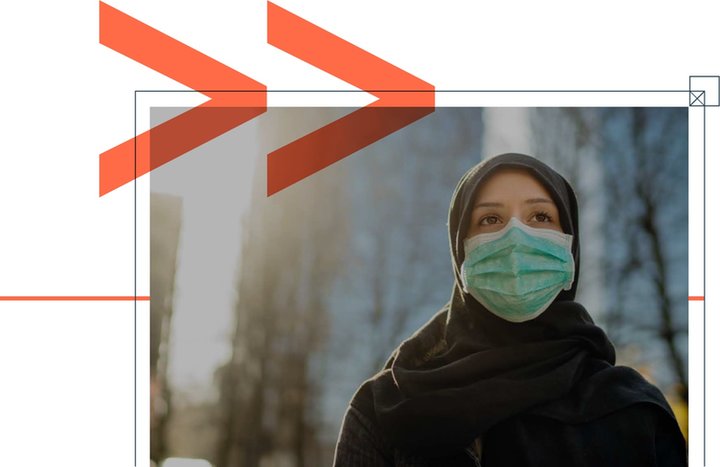The climate emergency and widening social inequality are two of the biggest crises facing the world today, and without urgent, bold action, the long-term consequences will be severe.
The Covid-19 pandemic has demonstrated how inequality deepens during a crisis. From poverty and marginalisation to rising global temperatures, we are at a tipping point where we risk causing irreparable damage to our way of life, our communities and our planet if we don’t act now.
Laudes Foundation is one of many organisations that sees both crises as the result of a flawed economic system, which has brought great prosperity to many, but is weighed down by deeply rooted beliefs, particularly the notion that value is purely financial and individual needs outweigh the public good. We believe it is our obligation to create the maximum, long-term, global benefit possible with the funds we have available. To do this, we must work to change this broken system.
As part of the Brenninkmeijer family enterprise, Laudes is built on six generations of entrepreneurship and philanthropy and we focus on creating systemic change in sectors that have an outsized impact on climate and inequality: fashion, the built environment, and finance and capital markets.
Our vision is one where global markets value all people and respect nature, and we realise this ambitious vision requires a collective commitment to long-term systems change.
That’s why we have joined a movement of business leaders, policymakers, academics, NGOs and other funders to challenge and inspire industry to harness its power for good.

Developing
our
strategy
Acknowledging we have no time to waste, and joining others already working in this space, we built our strategy together with a range of global stakeholders.
Acknowledging we have no time to waste, and joining others already working in this space, we built our strategy together with a range of global stakeholders.
In 2020, we collaborated with, listened to and learned from 300 leaders, executives and experts from a number of different sectors who shared their views on the economic system. What was clear was, that in order to change systems, we need to change the mindsets, rules and power of workers and producers, business leaders, policymakers and investors, who are the key agents to make change happen.
“If you raise ambition and covenants and brave action in the private sector, governments will then feel the pressure to raise their ambition and set more ambitious targets to deliver climate.”
Executive Director, NGO
“I just don't think we can change anything in this world without recognising that it is about private sector, governments and civil society together.”
CEO, Think Tank
“Most of the conversation revolves around rehashing what's wrong with the system. Nobody is laying out roadmaps for implementation. My biggest worry is there's a lot of talk about how change needs to happen, but there's not a lot of rubber on the road in terms of what it really looks like.”
CEO, Global Foundation
“Workers have been excluded from being stakeholders and rights holders. And the point is shareholders don't get away with this anymore. There's actually a call for a social licence to operate. And that is from big brands through to local and small businesses.”
CEO, NGO
Our
five-year
strategy
In this uncertain world, we created our five-year strategy to be deliberately flexible, so we can constantly incorporate lessons and respond to change.
In this uncertain world, we created our five-year strategy to be deliberately flexible, so we can constantly incorporate lessons and respond to change. At the same time, we hold ourselves accountable for the change we want to see, and by 2025 would like to have contributed to the following outcomes:
- Workers, producers (and the communities around them) who claim their rights and build power to organise and advocate for climate-positive practices and equity and inclusion.
- Businesses and industries that promote and implement bold, climate-positive policies, models and practices that contribute to equity and inclusion.
- A financial sector that uses its influence, policies, practices and valuation methodologies to ensure climate-positive practices and equity and inclusion.
- Policymakers who reform, implement, enforce and protect critical laws and policies that require businesses and investors to adopt climate-positive, inclusive practices.
As the climate deadline nears, our 2030 ambition is to strive for a more inclusive and climate-positive economy, with bold policy and regulatory frameworks, an accountable financial sector, climate-positive businesses, and active and organised workforces, producers and communities.
OUR FIVE-YEAR STRATEGY
OUR MISSION
is to support brave action to inspire and challenge industry to harness its power for good
OUR VISION
is one where global markets value all people and respect nature
SectorS and Interventions
Finance and Capital Markets
- Integrating the price of climate-related externalities into policy
- Infuencing investors and banks to become Paris-compliant across all assets
- Engaging investors to drive business and industry toward Paris-compliance
- Expanding new economic thinking into practical application with policymakers and business
Fashion
- Ensuring a just transition including social protection for workers
- Promoting incentives for accountability, including transparency and regulatory mechanisms
- Promoting collective action, the agency of workers and communities, and the organisations that support them
- Enabling legislation to incentivise next generation and circular materials (and disincentivising fossil fuel-based materials)
- Accelerating investment into next generation and circular materials (and disincentivising investment in fossil fuel-based materials)
- Transitioning business models (in materials) to landscape approaches, creating more income security for farmers and enabling climate-positive practices
Built Environment
- Establishing and implementing industry roadmaps as well as enabling legislation on whole life carbon and circular economy
- Accelerating the equitable distribution of investment in net-zero carbon and resource-efficient buildings
- Supporting communities to ensure sector decarbonisation and increased resource efficiency promote equity and inclusion
- Accelerating the uptake of sustainable wood and bio-based materials construction through Built by Nature
WORKING WITH FOUR KEY STAKEHOLDERS
OUR APPROACHES
Economic
System
Map
During the strategy development process, we developed an interactive Economic System Map, to visually reflect, test and share what we learned from our strategy development process.
During the strategy development process, we developed an interactive Economic System Map, to visually reflect, test and share what we learned from our strategy development process.
The map, which is published under a Creative Commons licence, enables anyone to understand our view of the structural issues within the economic system, and explore how the economic system works. For example, the map shows how decisions by investors can affect the salaries of workers, or how successful businesses are able to influence policy decisions to their advantage.
The map also shows more than 130 organisations and the changes they are working towards within the economic system. It is a tool to create discussion and dialogue between people with different views on what is needed (and what might be most effective) to change the economic system.
Understanding
our Theory
of Change
The development of our five-year strategy informed our Theory of Change.
As part of the development of our five-year strategy, we designed a
Theory of Change. It shows how through specific interventions we can contribute to the short- and long-term changes necessary to influence four key stakeholders – workers and producers (and the communities they live in), business and industry leaders, investors and policymakers.
We developed detailed, causal chains for each of our industry focus areas and used this information to develop our Theory of Change. An interactive version is available on our website, so that our partners and potential partners can understand how their own visions can amplify the change we all want to see.
Our Theory of Change also helps us determine which of our six approaches will work best:
Accelerating advocacy
Strengthening accountability
Scaling research and innovation
Cultivating alliances
Amplifying narratives
Redefining value
Measuring
and
learning
To measure our progress towards systems change, while adapting to a rapidly changing world, we’ve developed a rubrics-based methodology.
To measure our progress towards systems change, while adapting to a rapidly changing world, we’ve developed a rubrics-based methodology. Our 21 rubrics, covering everything from processes to long-term impact, set a standard for what ‘good’ looks like and create a shared language with our partners and other funders to describe and assess this using both qualitative and quantitative evidence.
These rubrics inform our entire grantmaking process, from the design phase to measurement, evaluation and learning. We have also published a rubrics tool on our website to make our grant application process easier for potential partners.

NEXT
Our
programmes

NEXT
Our Covid-19
emergency
response